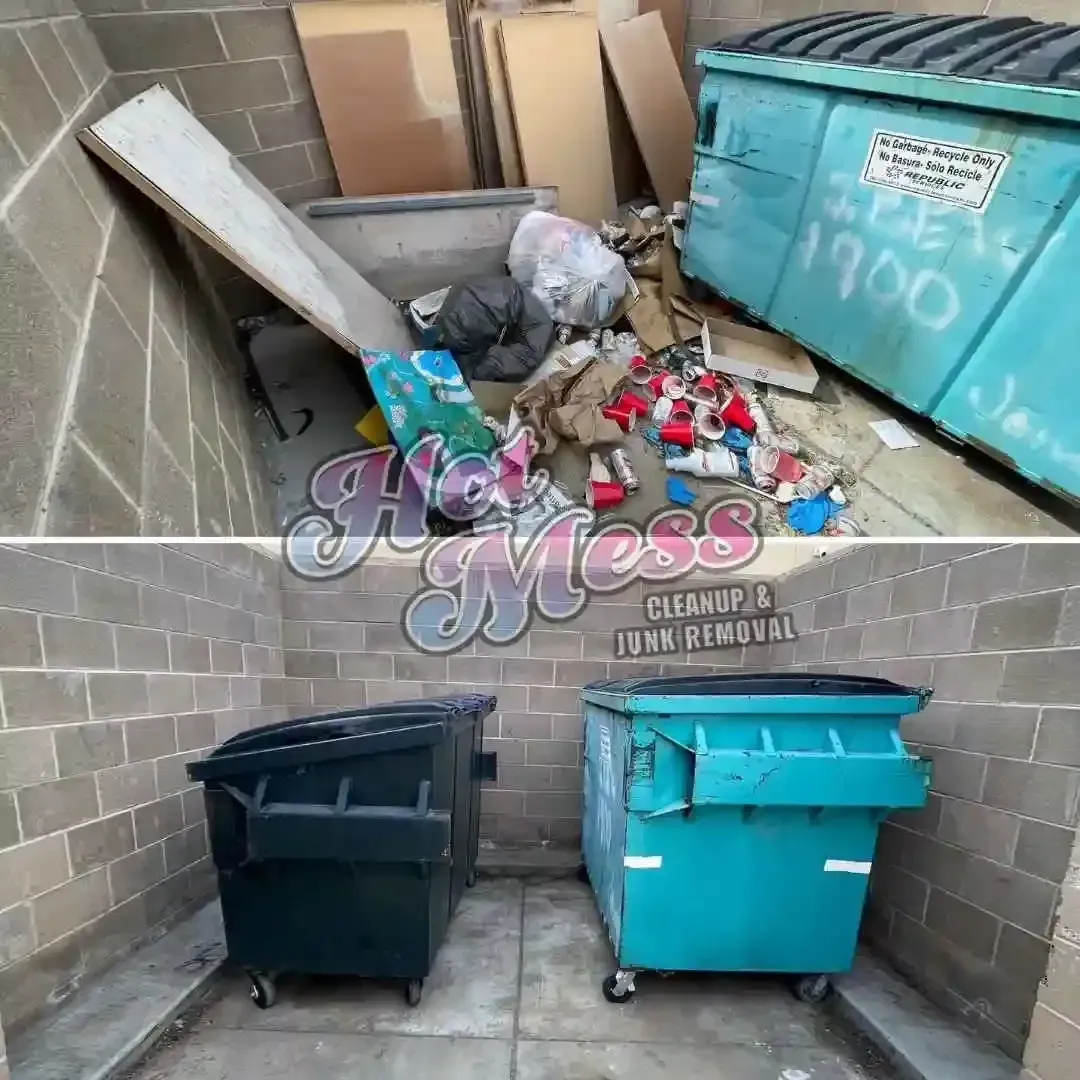Hoarder Cleanout: How to Tackle the Emotional and Physical Challenges
Hoarding is a complex issue that extends far beyond the cluttered piles of items filling every corner of a home. It’s a deeply emotional and psychological challenge, one that can take a toll on the individual and their loved ones. When faced with the daunting task of cleaning out a hoarded home, it’s easy to feel overwhelmed, helpless, and unsure where to start. The process can seem endless—both emotionally and physically. But with the right strategies, support, and mindset, hoarder cleanouts can be managed in a way that’s productive and healthy for everyone involved.
Let’s break down the key steps to successfully tackle the emotional and physical challenges of hoarder cleanouts. This guide will provide a roadmap for navigating the emotional hurdles, the overwhelming clutter, and the path toward a cleaner, more organized living space.
Understanding Hoarding: A Deep-Rooted Issue
At the heart of hoarding lies an emotional connection to possessions that often goes unrecognized until the situation becomes unmanageable. Hoarding is classified as a psychological disorder in which individuals accumulate items to the point where it interferes with daily life. Unlike simple clutter, hoarding usually involves an extreme attachment to things, which can be driven by fear of losing them, sentimental value, or a compulsive need to acquire more.
The challenge is that hoarding often leads to dangerous living conditions. Piles of objects can create hazards such as tripping, fire risks, and unsanitary environments. But it’s also important to understand that those struggling with hoarding are often aware of the clutter, yet feel powerless to do anything about it. This makes cleaning out a hoarded home a delicate balance of addressing the emotional triggers while making progress on the physical clutter.
The First Step: Acknowledge the Emotional Roadblocks
Before you dive into any cleanup process, it’s essential to recognize the emotional and psychological barriers that often accompany hoarding. The fear of letting go, the overwhelming sense of guilt, and the difficulty of making decisions about what to keep and what to discard are all common emotional challenges faced during a hoarder cleanout. It’s critical to approach this process with patience, empathy, and understanding. It’s easy to assume that someone just “doesn’t care” about the state of their home, but for many individuals, the clutter represents something deeper. It may represent a past trauma, loss, or emotional void that the person hasn’t processed. For those struggling with hoarding, the physical clutter is often a manifestation of emotional turmoil.
Take the time to speak with the person involved. Open a non-judgmental line of communication to understand their struggles, fears, and hesitations. In some cases, working with a mental health professional or therapist experienced in dealing with hoarding behavior may be necessary. Hoarding is not simply about “cleaning up a mess” but addressing the root causes behind the behavior.
Breaking the Process into Manageable Steps
Once the emotional challenges have been addressed, the next critical hurdle is the physical cleanup. Hoarder cleanouts can quickly become overwhelming due to the massive amount of clutter that may have accumulated over time. Tackling such a large task without a clear plan can easily lead to burnout and frustration. Therefore, starting with a well-defined strategy is essential. Identify the areas of the home that require the most attention first, whether it's a particular room, floor, or section of the house. Focusing on one area at a time ensures that you don’t feel like the task is insurmountable and allows you to make noticeable progress.
It’s also helpful to establish a schedule. This means outlining specific rooms or sections to be addressed each day or week, depending on the level of clutter and the amount of time available. Breaking the cleanup into manageable chunks gives you a sense of accomplishment as you check off completed areas, making the process feel less daunting. Remember, slow and steady progress is more effective than rushing the job.

Gather the Necessary Tools and Support
A successful hoarder cleanout requires more than just physical effort; it also involves having the right tools and a support system in place. Before diving into the task, ensure you have the proper cleaning and safety gear to protect yourself and others. This includes gloves, face masks, sturdy trash bags, boxes for sorting, and protective clothing. If the space contains hazardous materials, such as mold or sharp objects, additional safety equipment may be necessary. Having all the appropriate tools readily available will streamline the process and ensure a safer cleanup.
Equally important is having a support system. Hoarder cleanouts can be emotionally taxing, and attempting to handle everything alone can quickly become overwhelming. Bring in family members, friends, or professionals who are experienced in organizing or junk removal. Trained specialists can help with both the physical demands of the cleanup and the emotional challenges that arise throughout the process. Having the right support ensures that the job progresses smoothly and that you’re not carrying the burden alone.
Sorting the Items: What to Keep, What to Let Go
One of the most emotionally charged parts of the hoarder cleanout process is deciding what to keep and what to discard. For someone struggling with hoarding, this can be an extremely difficult decision to make. Every item can hold immense sentimental value, even if it appears insignificant to others. Here are some tips for approaching this phase:
- Set clear categories: Before getting started, create distinct categories such as “Keep,” “Donate,” “Sell,” and “Trash.” This will help guide decision-making and keep the process organized.
- Take it slow: Don’t rush the process. Allow time for the individual to reflect on each item. Forcing decisions too quickly can lead to feelings of regret or anxiety.
- Start with easier items: Begin by sorting through less emotionally charged items—perhaps clothing or items that are clearly broken. As you make decisions about these, the process will get easier as you progress to more challenging items.
- Use the “one-year rule”: If an item hasn’t been used in the past year, consider letting it go. This can help remove some of the emotional attachment and make it easier to part with things that no longer serve a purpose.
- Involve the person: Whenever possible, allow the person who is hoarding to have the final say about what to keep. This is their process, and they should feel empowered to make decisions. It also helps to maintain trust and respect throughout the process.
- Take breaks: Hoarder cleanouts can be mentally and physically exhausting. Schedule regular breaks to avoid burnout and provide emotional respite.
Dispose of Unwanted Items Safely
When tackling a hoarder cleanout, one of the most important aspects is disposing of unwanted items safely and responsibly. Hoarded homes can contain a wide range of items, from everyday trash to hazardous materials like old electronics, chemicals, and expired food. Simply throwing everything into the trash can pose health and safety risks, which is why it's crucial to follow local disposal guidelines. For items that can’t be disposed of in regular waste containers, such as electronics or chemicals, be sure to use specialized recycling centers or disposal services.
Moreover, some items may be reusable or recyclable, so it's important to separate things that can be donated, sold, or recycled. Consider partnering with a professional junk removal company that can handle large volumes of clutter and ensure that items are disposed of in the safest and most eco-friendly manner. Safe disposal not only reduces the environmental impact but also ensures that the hoarded space is cleaned effectively and responsibly.
Dealing with the Emotional Aftermath
Once the physical cleanup is completed, the emotional journey is far from over. Hoarding is not simply about cleaning up a space but addressing deep-rooted emotional issues that can affect the individual long after the clutter has been cleared. The aftermath of a hoarder cleanout often involves a period of emotional adjustment, as the person who struggled with hoarding may feel a range of emotions, including guilt, anxiety, or even grief over parting with items that had significant emotional value. It’s vital to acknowledge these feelings and provide continued support during this time.
Professional counseling or therapy can help individuals process their emotions and develop healthier coping mechanisms. Additionally, staying connected with family and friends who understand the struggle can provide a strong support system. It’s important to remember that recovery is an ongoing process. By addressing both the emotional and physical aspects of hoarding, long-term progress can be made, creating a healthier living environment and a better quality of life.
Conclusion
A hoarder cleanout is a monumental task, but it is possible to address the emotional and physical challenges associated with it. The process requires patience, empathy, and a clear plan. It’s essential to approach the situation with sensitivity, acknowledging the emotional toll hoarding takes on individuals while also making practical strides toward a cleaner, safer living environment. If you find yourself facing a hoarder cleanout, it’s important to remember that this is a journey, not a race. Be kind to yourself or the person involved, and don’t hesitate to seek professional help when necessary. Whether it’s organizing, decluttering, or simply providing emotional support, there is always a way forward.
For those in the Las Vegas area seeking expert help with hoarder cleanouts, Hot Mess Cleanup & Junk Removal is here to assist. With our professional team, we handle both the emotional and physical aspects of the cleanout process, ensuring that your space is restored and ready for a fresh start. Contact us today at 702-800-0506 or email us at info@hotmessvegas.com to learn more about how we can help make the hoarder cleanout process smoother for you.











